#Cocoa Bean Gin Liqueur Recipe
Explore tagged Tumblr posts
Text


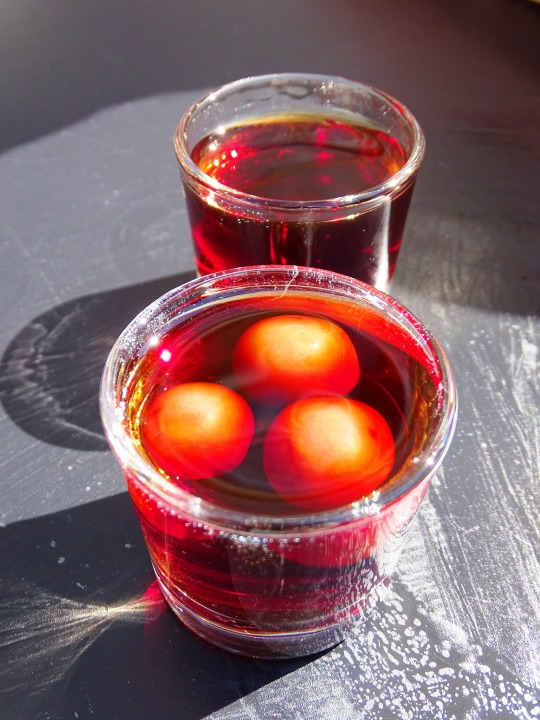

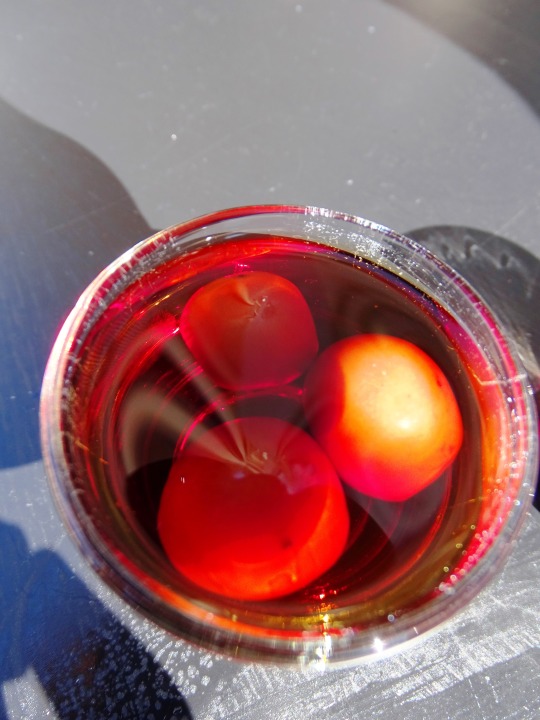
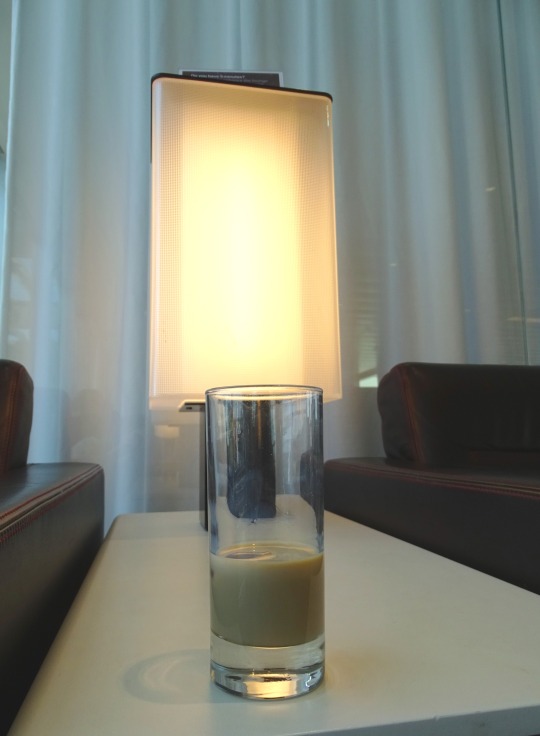
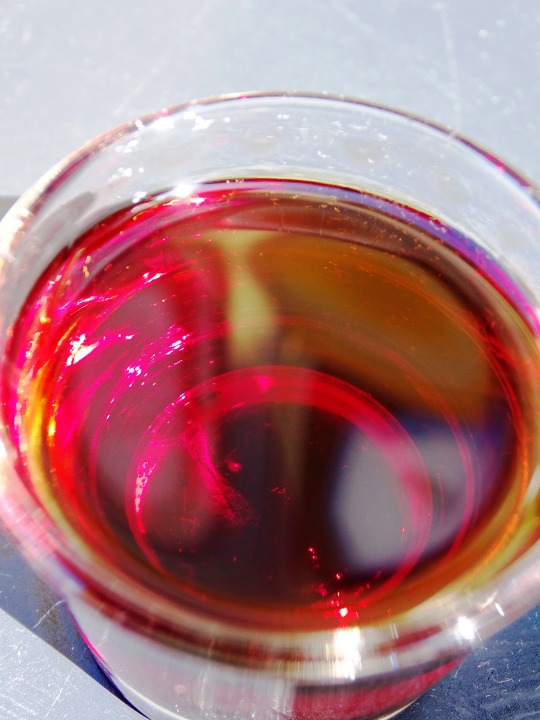

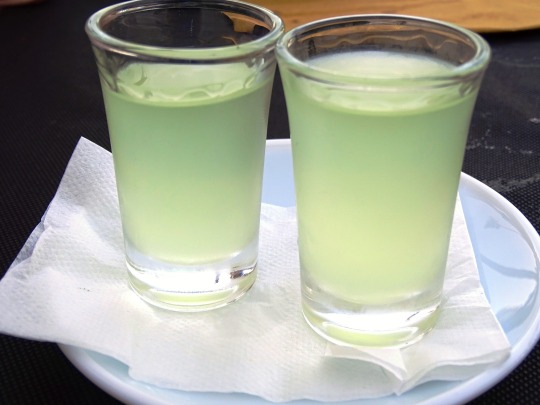
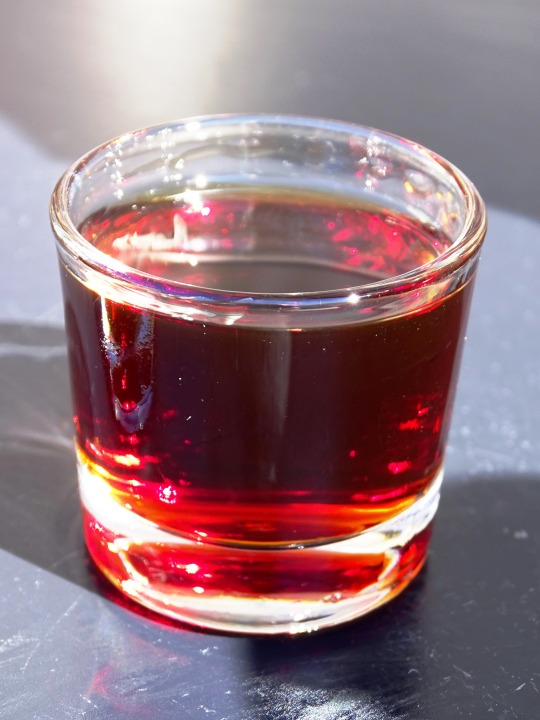

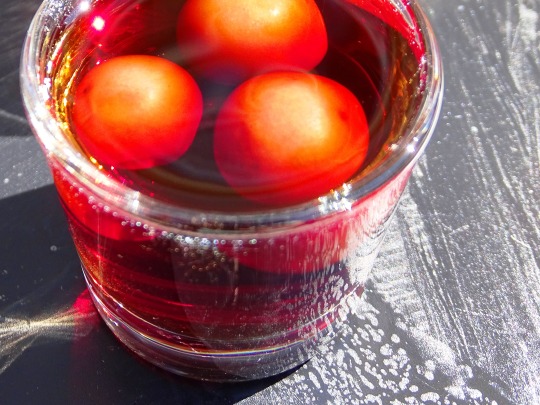
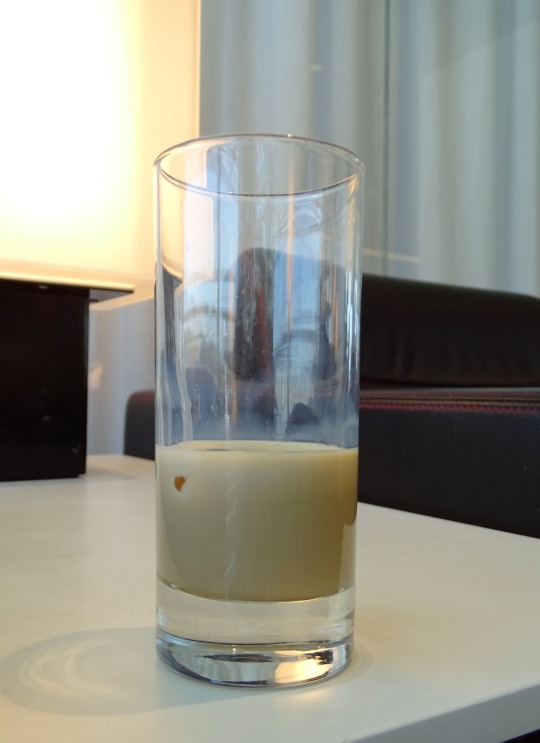


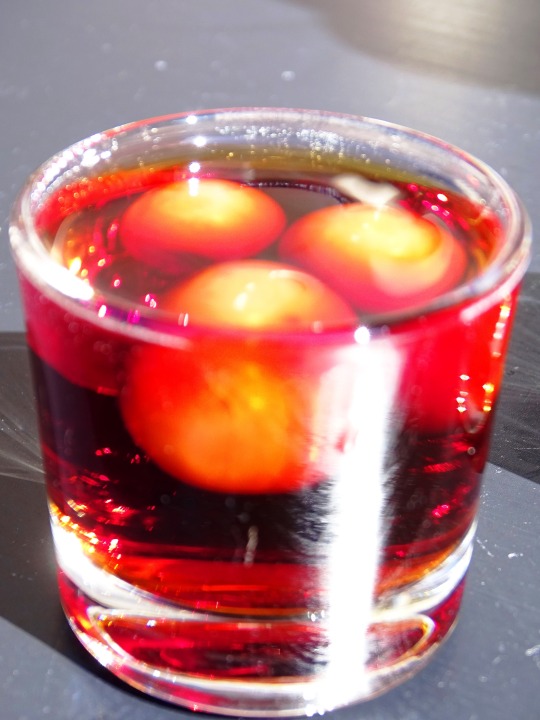
National Liqueur Day
Today we celebrate and imbibe liqueur, a distilled alcoholic beverage that is sweetened or blended with herbs, spices, flowers, nuts, cream, or fruits. The alcohol content of liqueur generally ranges from between 24 percent and 60 percent (48-120 U.S. proof) and is usually lower than that of liquor (spirits). Usually, the base spirit used to make liqueur is brandy. Liqueurs are not aged for very long, although their base spirit may be. But, there may be a resting stage to allow the flavors to blend together properly. In the United States, liqueurs are sometimes called cordials or schnapps. Technically, in the United States, the name schnapps only applies to brandies distilled from fermented fruits. Usually syrupy and sweet, liqueurs are used to make after-dinner drinks or are mixed with coffee. They may be drunk straight, poured over ice, or mixed. They are also commonly used to flavor desserts.
By 400 BC, fortified spirits were being made by the distillation of wine by the Egyptians and Greeks, who sweetened them with cinnamon and honey. These spirits were similar to today's liqueur and used ingredients that now are used to make mead. During the thirteenth century, European monks and alchemists improved upon the distillation process and created what we now would recognize as a liqueur. At the time it was mainly used for medical purposes. Today there are both generic liqueurs and proprietary liqueurs—those made by individual producers, often with a secret formula, with registered brand names. The following are some of the most common:
Generic:
Advocaat: cream liqueur.
Amaretto: almond flavor.
Apricot.
Crème d'ananas: flavored with pineapple.
Crème de cacao: flavored with cocoa and vanilla beans.
Crème de framboises: made with raspberries.
Crème de menthe: flavored with mint.
Crème de noyaux: almond-flavored; made with fruit pits; similar to amaretto.
Crème de violette: also known as parfait amour; contains oils from both violets and vanilla beans.
Kümmel: flavored with caraway seed.
Limoncello (Italy): lemon-flavored.
Sloe gin: flavored from the fruit of the blackthorn bush.
Triple sec: orange-flavored; colorless Curaçao.
Proprietary:
Baileys Irish Cream (Ireland): Irish whiskey and cream.
Bénédictine (France): first made in 1510; closely-guarded formula.
Campari (Italy): herbs and fruit.
Chartreuse (France): formula was developed in 1607; contains green and yellow plant liqueurs; spicy and aromatic flavors.
Cherry Heering (Denmark): cherry flavored.
Cointreau (France): proprietary blend of triple sec.
Crème Yvette (United States): violet flavor and color.
Curaçao: flavored from the dried peels of the green oranges from the island of Curaçao, located in the Caribbean Sea.
Danziger Goldwasser: spicy; contains tiny gold specks.
Drambuie (Britain/Scotland): Scotch whisky base; flavored with heather honey and herbs; made with a French formula that was brought to Scotland in 1745.
Forbidden Fruit (United States): brandy and grapefruit.
Grand Marnier (France): orange liqueur with cognac base; created in 1880; one of the most famous liqueurs of all time; Escoffier used it to make Crêpes Suzette; César Ritz was a fan of it and used it at his hotels.
Irish Mist (Ireland): made with Irish whiskey and honey; spicy.
Jägermeister (Germany).
Kahlúa (Mexico): coffee-flavored.
Liquore Galliano (Italy).
Midori (Japan): flavored with melon.
Sambuca (Italy): anise-flavored.
Strega (Italy).
Tia Maria (Jamaica): rum as base spirit; coffee-flavored.
Van der Hum (South Africa): spicy; aromatic.
How to Observe National Liqueur Day
Celebrate the day drinking liqueur. Use it to make an after-dinner drink, enjoy it straight, or pour it over ice. There are a countless amount of liqueurs and recipes that go with them that you could try. You could also use liqueurs to make a dessert. You could even use the day to learn how to make your own liqueurs. If you don't drink, you could still make or bake a dessert with liqueur for someone else, or try your hand at making homemade liqueur for a friend to try.
Source
#Fuzzy Navel#Baileys Irish Cream#National Liqueur Day#NationalLiqueurDay#16 October#Limoncello#Spain#Portugal#summer 2021#original photography#don't drink and drive#Ginjinha#Ginja#Ginjinha Espinheira#Lisbon#Mojácar#Lisboa#España#travel#vacation#tourist attraction#sour cherry#Southern Europe#Iberia#Canada#Switzerland
4 notes
·
View notes
Photo

New Post has been published on http://www.buildthebottle.com/2020/03/09/cocoa-liqueur-recipe/
Cocoa Gin Liqueur Recipe D.I.Y.
Cocoa Gin Liqueur Recipe D.I.Y.
Hey Guys and Gals!
Are you looking for an awesome Cocoa Gin Liqueur Recipe? You now have no reason to look any further you have just found what you have been looking for! This is the most awesome tasting Cocoa Gin Liqueur Recipe in the world.
Ingredients
1.5 ounces of cocoa beans
2/3 cup of sugar (optional)
3 cups of gin
Utensils Tips
Here is a list of the simplest utensils that you can use; the ones Mom should already have in the kitchen:)
Utensils: – cheesecloth – saucepan – small funnel – glass bottles, or storage containers, for bottling and serving, you can either use the glass Jar you used before, or just buy a second one.
Instructions:
Place the beans into your container and add in the gin, Close the lid and give it a good shake.
Aging, Straining, filtering, and Drinking Your Cocoa Gin Liqueur
Store in a cool dark place for 1 week.
After 1 week you can strain out the cocoa beans. Leaving them in will let them keep adding flavor and has a unique look so it is your choice.
(If you strain you can use a cheesecloth or a coffee filter)
Stir in sugar tasting to make sure that its sweetness is to your liking.
Congratulations, You Have Completed Making this Awesome Cocoa Gin Liqueur Recipe!
You now need a bottle and a label which are cool enough to compliment your hard work. Honestly, if you put it into a cheap bottle, people will make fun of you. BUT, if it looks good, people will rave about it!
Notes on Utensils and Ingredients
Glass is always preferable when working with strong alcohol. Avoid plastic as much as possible.
Use organic ingredients to avoid pesticide residues.
You Like Our Recipes So Try Our Vodka
YelloVodka.com
Other Great Recipes for You to Check Out!
Mint Liqueur Recipe D.I.Y.
Pumpkin Liqueur Recipe D.I.Y.
Jackfruit Liqueur Recipe D.I.Y.
Cucumber Gin Liqueur Recipe
Carrot Liqueur Recipe D.I.Y.
Wall Germander Liqueur Recipe
Plum Liqueur Recipe D.I.Y.
Sour Apple Cinnamon Liqueur recipe D.I.Y.
Plum Liqueur Recipe D.I.Y.
Sour Apple Cinnamon Liqueur recipe D.I.Y.
From Our Sister Blog Terebelo.com
Marketing With Optimism
The Marketing Of My Vodka Named Yello
Sales Pitch Listen Don’t Talk
What Is In A Handshake
Be Well Rested Before A Meeting
You Will Find Great Analysis At tastethebottle.com Of Bottles Of Alcohol
To spirits and cheers,
Binyomin Terebelo, Master Distiller and Drinkologist.
#Cacaco Liqueur#Cacao GIn Liqueur#Cacao Gin Liqueur Recipe#Cacao Gin Recipe#Cacao Liqueur#Cacao Liqueur Recipe D.I.Y.#Chocolate Gin#Chocolate Gin Liqueur#Chocolate Gin Liqueur Recipe#Chocolate Gin Liqueur Recipe D.I.Y.#Chocolate Gin Recipe#Cocoa#Cocoa Bean Gin Liqueur Recipe#Cocoa Bean Gin Liqueur Recipe D.I.Y.#Cocoa Bean Liqueur#Cocoa Gin#Cocoa Gin Liqueur#Cocoa Gin Liqueur Recipe#Cocoa Gin Liqueur Recipe D.I.Y.#Cocoa Liqueur#Cocoa Liqueur Recipe#Cocoa Liqueur Recipe D.I.Y.#gin liqueur#Gin Liqueur Recipe#Gin Recipe
0 notes
Note
Hello Miss Talviel,
I know that in Tamriel a straight wine or mead (or Sujamma in my case) is usually the favored drink, but what are some interesting cocktail choices one might find in the provinces?
I've never been a huge fan of cocktails myself, but I certainly have had my fair share and made a few too (see my recipes for Sujamma, White-Gold Tower, Argonian Bloodwine, and Vaermina's Nightmare). These are a few from across Tamriel that I've enjoyed.
Altmer
The High Elves do love their fancy drinks, preferably served chilled and in tall glasses! I very much enjoyed a cocktail from Shimmerene made from muddled peaches, riesling, apricot juice, cherry vodka and white rum, served over ice and garnished with crushed cherry blossom petals. Light and fruity, and just the thing for a hot day in Summerset.
Argonians
While alcohol does not feature heavily in Argonian diets, my old friend Talen-Jei learned the tricks of his trade from Black Marsh, and taught me a couple of recipes too. In Stormhold, locals enjoy a strong moonshine called arak, which they mix with lemongrass syrup, tropical fruit juices and crushed ice to make cocktails. Fruits used are usually starfruit, dragonfruit, papaya, and mango- all delightfully refreshing, sweet, and tangy! Some Argonians also add Hist sap to their drinks, but only on special occasions.
Bosmer
Aside from rotmeth and jagga, the Bosmer aren't known for making cocktails, as many ingredients needed are plant-based. For those who don't mind imported ingredients though, jagga spiked milkshakes are a weakness of mine. Simply combine jagga, thick cream, sweet aphid syrup, a vanilla bean, ice and some Black Marsh cocoa powder, shake together, and you'll have a boozy treat in no time!
Bretons
Most Bretons prefer their alcohol neat, but it's not uncommon to have a cocktail here and there, especially if it's gin-based. A popular drink in Daggerfall called the King Casimir is an elderflower gin mixed with elderflower cordial, lime juice, a bit of mint, and tonic water. Simple and refreshing!
Dunmer
There are dozens, if not over a hundred cocktails native to Morrowind, and I am by no means a connoisseur. With everything from shein to sujamma, the Dunmer have created a cocktail for every mood and occasion! I do enjoy a classic comberry martini, made with sujamma and comberry liqueur and served with a maraschino comberry on a marshmerrow stick. Simple, tasty, and bound to get you drunk after a couple of glasses.
Imperials
Another race fond of their cocktails, the Imperials have their mixology tailored to an art. My favourite Cyrodiilic liqueur is frangelico, which has a sweet almond aroma. While it's not a cocktail per se, I enjoy a splash of it in a drink that's equal parts coffee and hot chocolate, and topped with whipped cream and candied almonds- a luxurious sip inspired by the Colovian Highlands.
Khajiit
Moon sugar double rum is a cornerstone of Khajiiti brewing, and it features in many of their drinks! A firm favourite in Senchal is a tasty and zesty blend of dark rum, cinnamon, vanilla, and blood orange juice, with a glass rimmed with moon sugar, pepper, and cinnamon. Spicy and fragrant, this drink is perfect for those with a more adventurous palate.
Nords
Aside from the quintessential White-Gold Tower served at the Bee and Barb in Riften, Nord mead makes its way into many drinks in Skyrim, despite the fact we Nords prefer to drink it as is. Candlehearth Hall in Windhelm has recently introduced a cocktail made of mead, pomegranate juice, crushed snowberries, smoked whiskey, and orange zest, finished with a swirl of honey.
Orcs
While I've never been much of an ale drinker myself, there is no drink more Orcish. While it's unlikely you'll find a cocktail in the majority of strongholds, bartenders in High Rock have used Orcish ale as a base for some of their drinks. One of them is a blend of dark ale, lemonade, muddled berries, and a splash of bourbon. Strong but fruity in favour, it's an acquired taste, but frothy and pleasant when you get used to it!
Redguards
Mint grows in abundance throughout much of Hammerfell, and it stands to reason that it's made its way into many of the drinks enjoyed by Redguards. One of them is a blend of white rum, bourbon, mint-infused simple syrup, brown sugar, lots of muddled mint, and sparkling water. Simple and refreshing, these minty cocktails are the perfect thing to beat the Alik'r heat.
85 notes
·
View notes
Text


















National Liqueur Day
Today we celebrate and imbibe liqueur, a distilled alcoholic beverage that is sweetened or blended with herbs, spices, flowers, nuts, cream, or fruits. The alcohol content of liqueur generally ranges from between 24 percent and 60 percent (48-120 U.S. proof) and is usually lower than that of liquor (spirits). Usually, the base spirit used to make liqueur is brandy. Liqueurs are not aged for very long, although their base spirit may be. But, there may be a resting stage to allow the flavors to blend together properly. In the United States, liqueurs are sometimes called cordials or schnapps. Technically, in the United States, the name schnapps only applies to brandies distilled from fermented fruits. Usually syrupy and sweet, liqueurs are used to make after-dinner drinks or are mixed with coffee. They may be drunk straight, poured over ice, or mixed. They are also commonly used to flavor desserts.
By 400 BC, fortified spirits were being made by the distillation of wine by the Egyptians and Greeks, who sweetened them with cinnamon and honey. These spirits were similar to today's liqueur and used ingredients that now are used to make mead. During the thirteenth century, European monks and alchemists improved upon the distillation process and created what we now would recognize as a liqueur. At the time it was mainly used for medical purposes. Today there are both generic liqueurs and proprietary liqueurs—those made by individual producers, often with a secret formula, with registered brand names. The following are some of the most common:
Generic:
Advocaat: cream liqueur.
Amaretto: almond flavor.
Apricot.
Crème d'ananas: flavored with pineapple.
Crème de cacao: flavored with cocoa and vanilla beans.
Crème de framboises: made with raspberries.
Crème de menthe: flavored with mint.
Crème de noyaux: almond-flavored; made with fruit pits; similar to amaretto.
Crème de violette: also known as parfait amour; contains oils from both violets and vanilla beans.
Kümmel: flavored with caraway seed.
Limoncello (Italy): lemon-flavored.
Sloe gin: flavored from the fruit of the blackthorn bush.
Triple sec: orange-flavored; colorless Curaçao.
Proprietary:
Baileys Irish Cream (Ireland): Irish whiskey and cream.
Bénédictine (France): first made in 1510; closely-guarded formula.
Campari (Italy): herbs and fruit.
Chartreuse (France): formula was developed in 1607; contains green and yellow plant liqueurs; spicy and aromatic flavors.
Cherry Heering (Denmark): cherry flavored.
Cointreau (France): proprietary blend of triple sec.
Crème Yvette (United States): violet flavor and color.
Curaçao: flavored from the dried peels of the green oranges from the island of Curaçao, located in the Caribbean Sea.
Danziger Goldwasser: spicy; contains tiny gold specks.
Drambuie (Britain/Scotland): Scotch whisky base; flavored with heather honey and herbs; made with a French formula that was brought to Scotland in 1745.
Forbidden Fruit (United States): brandy and grapefruit.
Grand Marnier (France): orange liqueur with cognac base; created in 1880; one of the most famous liqueurs of all time; Escoffier used it to make Crêpes Suzette; César Ritz was a fan of it and used it at his hotels.
Irish Mist (Ireland): made with Irish whiskey and honey; spicy.
Jägermeister (Germany).
Kahlúa (Mexico): coffee-flavored.
Liquore Galliano (Italy).
Midori (Japan): flavored with melon.
Sambuca (Italy): anise-flavored.
Strega (Italy).
Tia Maria (Jamaica): rum as base spirit; coffee-flavored.
Van der Hum (South Africa): spicy; aromatic.
How to Observe National Liqueur Day
Celebrate the day drinking liqueur. Use it to make an after-dinner drink, enjoy it straight, or pour it over ice. There are a countless amount of liqueurs and recipes that go with them that you could try. You could also use liqueurs to make a dessert. You could even use the day to learn how to make your own liqueurs. If you don't drink, you could still make or bake a dessert with liqueur for someone else, or try your hand at making homemade liqueur for a friend to try.
Source
#Riverside Lemonade#Fuzzy Navel#Baileys Irish Cream#National Liqueur Day#NationalLiqueurDay#16 October#Limoncello#Spain#Portugal#summer 2021#original photography#don't drink and drive#Ginjinha#Ginja#Ginjinha Espinheira#Lisbon#Mojácar#Lisboa#España#travel#vacation#tourist attraction#sour cherry#Southern Europe#Iberia#Canada#Switzerland
1 note
·
View note
Photo










National Liqueur Day
Today we celebrate and imbibe liqueur, a distilled alcoholic beverage that is sweetened or blended with herbs, spices, flowers, nuts, cream, or fruits. The alcohol content of liqueur generally ranges from between 24 percent and 60 percent (48-120 U.S. proof) and is usually lower than that of liquor (spirits). Usually, the base spirit used to make liqueur is brandy. Liqueurs are not aged for very long, although their base spirit may be. But, there may be a resting stage to allow the flavors to blend together properly. In the United States, liqueurs are sometimes called cordials or schnapps. Technically, in the United States, the name schnapps only applies to brandies distilled from fermented fruits. Usually syrupy and sweet, liqueurs are used to make after-dinner drinks or are mixed with coffee. They may be drunk straight, poured over ice, or mixed. They are also commonly used to flavor desserts.
By 400 BC, fortified spirits were being made by the distillation of wine by the Egyptians and Greeks, who sweetened them with cinnamon and honey. These spirits were similar to today's liqueur and used ingredients that now are used to make mead. During the thirteenth century, European monks and alchemists improved upon the distillation process and created what we now would recognize as a liqueur. At the time it was mainly used for medical purposes. Today there are both generic liqueurs and proprietary liqueurs—those made by individual producers, often with a secret formula, with registered brand names. The following are some of the most common:
Generic:
Advocaat: cream liqueur.
Amaretto: almond flavor.
Apricot.
Crème d'ananas: flavored with pineapple.
Crème de cacao: flavored with cocoa and vanilla beans.
Crème de framboises: made with raspberries.
Crème de menthe: flavored with mint.
Crème de noyaux: almond-flavored; made with fruit pits; similar to amaretto.
Crème de violette: also known as parfait amour; contains oils from both violets and vanilla beans.
Kümmel: flavored with caraway seed.
Limoncello (Italy): lemon-flavored.
Sloe gin: flavored from the fruit of the blackthorn bush.
Triple sec: orange-flavored; colorless Curaçao.
Proprietary:
Baileys Irish Cream (Ireland): Irish whiskey and cream.
Bénédictine (France): first made in 1510; closely-guarded formula.
Campari (Italy): herbs and fruit.
Chartreuse (France): formula was developed in 1607; contains green and yellow plant liqueurs; spicy and aromatic flavors.
Cherry Heering (Denmark): cherry flavored.
Cointreau (France): proprietary blend of triple sec.
Crème Yvette (United States): violet flavor and color.
Curaçao: flavored from the dried peels of the green oranges from the island of Curaçao, located in the Caribbean Sea.
Danziger Goldwasser: spicy; contains tiny gold specks.
Drambuie (Britain/Scotland): Scotch whisky base; flavored with heather honey and herbs; made with a French formula that was brought to Scotland in 1745.
Forbidden Fruit (United States): brandy and grapefruit.
Grand Marnier (France): orange liqueur with cognac base; created in 1880; one of the most famous liqueurs of all time; Escoffier used it to make Crêpes Suzette; César Ritz was a fan of it and used it at his hotels.
Irish Mist (Ireland): made with Irish whiskey and honey; spicy.
Jägermeister (Germany).
Kahlúa (Mexico): coffee-flavored.
Liquore Galliano (Italy).
Midori (Japan): flavored with melon.
Sambuca (Italy): anise-flavored.
Strega (Italy).
Tia Maria (Jamaica): rum as base spirit; coffee-flavored.
Van der Hum (South Africa): spicy; aromatic.
How to Observe National Liqueur Day
Celebrate the day drinking liqueur. Use it to make an after-dinner drink, enjoy it straight, or pour it over ice. There are a countless amount of liqueurs and recipes that go with them that you could try. You could also use liqueurs to make a dessert. You could even use the day to learn how to make your own liqueurs. If you don't drink, you could still make or bake a dessert with liqueur for someone else, or try your hand at making homemade liqueur for a friend to try.
Source
#National Liqueur Day#NationalLiqueurDay#16 October#Limoncello#Spain#Portugal#summer 2021#original photography#don't drink and drive#Ginjinha#Ginja#Ginjinha Espinheira#Lisbon#Mojácar#Lisboa#España#travel#vacation#tourist attraction#sour cherry#Southern Europe#Iberia
0 notes
Photo

New Post has been published on http://www.buildthebottle.com/2020/07/06/cacao-mead-recipe/
Cacao Mead Recipe D.I.Y.
Cacao Mead Recipe D.I.Y.
Hey Guys and Gals!
Are you looking for an awesome Cacao Mead Recipe? You now have no reason to look any further; you have just found what you have been looking for!
Ingredients:
3 lbs of amber honey
1 gallons water
Step 2
Lalvin 71B Narbonne – 1 packet
yeast nutrient
Step 3
1 1/2 tablespoons of cacao nibs
1 oz. Dutch process cocoa
1/3 vanilla bean
Directions
Step 1
Boil the water and stir in your honey and then let cool.
Pour into your carboy your honey water go to step 2.
Step 2
yeast and nutrient.
Wait till the mead has cooled.
Prepare a 1L yeast starter by stirring the yeast into the water then let mixture stand in cup for 15 minutes.
Make sure it is bubbling and then you will add it to your beer after the beer has cooled.
Add the yeast at the temperature recommended on the packet together with yeast nutrient .
After 24-48 hours it should start bubbling.
Fermentation Through Bottling Your Cacao Mead Recipe
Make sure your primary has about a gallon of water in it otherwise fill it now.
Just be careful that your carboy is around a third empty leaving space for frothing and foaming.
Let it ferment. Rack the mead off the fruit to your secondary carboy after 6-7 days when the frothing has slowed down.
Let ferment for 1-2 months or more in the secondary then bottle.
Step 3
Add cacao nibs, Dutch process cocoa, and vanilla bean to carboy.
Let sit for 3-4 days. and then bottle. You can use a cheesecloth to filter.
Congratulations, You Have Completed Making this Awesome Cacao Mead!
You now need a bottle and a label which are cool enough to compliment your hard work. Honestly, if you put it into a cheap bottle, people will make fun of you. BUT, if it looks good, people will rave about it!
Notes on Utensils and Ingredients
Glass is always preferable when working with strong alcohol. Avoid plastic as much as possible.
Use organic ingredients to avoid pesticide residues.
You Like Our Recipes So Try Our Vodka
YelloVodka.com
Other Great Recipes for You to Check Out!
Pumpkin Liqueur Recipe D.I.Y.
Jackfruit Liqueur Recipe D.I.Y.
Cucumber Gin Liqueur Recipe
Carrot Liqueur Recipe D.I.Y.
Wall Germander Liqueur Recipe
Plum Liqueur Recipe D.I.Y.
Sour Apple Cinnamon Liqueur recipe D.I.Y.
Plum Liqueur Recipe D.I.Y.
Sour Apple Cinnamon Liqueur recipe D.I.Y.
From Our Sister Blog Terebelo.com
Marketing With Optimism
The Marketing Of My Vodka Named Yello
Sales Pitch Listen Don’t Talk
What Is In A Handshake
Be Well Rested Before A Meeting
You Will Find Great Analysis At tastethebottle.com Of Yor Favorite Bottle
To spirits and cheers,
Binyomin Terebelo, Master Distiller and Drinkoligist
Image by gate74 from Pixabay
#Cacao Bean Mead#Cacao Bean Mead Recipe#Cacao Mead Recipe#Cacao Mead Recipe D.I.Y.#How To Make Cacao Mead Recipe
0 notes
Photo

New Post has been published on http://www.buildthebottle.com/2020/03/19/cocoa-bean-rum-liqueur-recipe/
Cocoa Bean Rum Liqueur Recipe D.I.Y.
Cocoa Bean Rum Liqueur Recipe D.I.Y.
Hey Guys and Gals looking for a Cocoa Bean Rum Liqueur?
You now have no reason to look any further, you have just found what you are looking for! This is a recipe for the most awesome tasting Cocoa Bean Rum Liqueur in the world.
Ingredients
Step 1
4 cups of rum
2 vanilla beans, each split lengthwise
1/4 cup cocoa nibs
Step 2 (optional)
1 Cup of sugar
1 cup of water
Directions
Step 1
Combined ingredients into a your aging container close and shake.
Aging and Straining Your French Orange Liqueur
Let liqueur age for 3 weeks in a cool dark place.
While the liqueur is aging, give the jar a good shake once or twice a week to agitate and enhance the infusion.
After 3 weeks of infusing, it’s time to strain your liqueur.
Carefully strain the liquid through several layers of cheesecloth. It helps to moisten the cheesecloth first so the liquid permeates more smoothly.
Once you get to the point of straining out the pulp and rind, gently wring the cheesecloth to extract all of the liquid and juice (the fourth photo).
After straining, you can discard all of the rind, pulp and any spice.
Strain back into the large container if you are going to do step 2
Otherwise you can go straight to bottling.
Step 2
Bring the cup of water to a boil in a saucepan. Stir in the sugar slowly making sure it doesn’t burn. Once the sugar has dissolved shut the fire and let cool.
Once cool add slowly to the liqueur tasting all the while till its to your liking.
Congratulations, You Have Completed Making this Awesome Cocoa Bean Rum Recipe!
You now need a bottle and a label which are cool enough to compliment your hard work. Honestly, if you put it into a cheap bottle, people will make fun of you. BUT, if it looks good, people will rave about it!
Utensils Tips
Here is a list of the simplest utensils that you can use; the ones Mom should already have in the kitchen:)
Utensils: – A large glass jar (3 liter jar) – large plastic bowl – measuring cups (liquid and dry) – metal strainer – cheesecloth – saucepan – small funnel – glass bottles, or storage containers, for the final product, you can either use the glass Jar you used before, or just buy a second one.
Notes on Utensils and Ingredients
Glass is always preferable when working with strong alcohol. Avoid plastic as much as possible.
Use organic ingredients to avoid pesticide residues.
You Like Our Recipes So Try Our Vodka
YelloVodka.com
Other Great Recipes for You to Check Out!
Mint Liqueur Recipe D.I.Y.
Pumpkin Liqueur Recipe D.I.Y.
Jackfruit Liqueur Recipe D.I.Y.
Cucumber Gin Liqueur Recipe
Carrot Liqueur Recipe D.I.Y.
Wall Germander Liqueur Recipe
Plum Liqueur Recipe D.I.Y.
Sour Apple Cinnamon Liqueur recipe D.I.Y.
Plum Liqueur Recipe D.I.Y.
Sour Apple Cinnamon Liqueur recipe D.I.Y.
From Our Sister Blog Terebelo.com
Marketing With Optimism
The Marketing Of My Vodka Named Yello
Sales Pitch Listen Don’t Talk
What Is In A Handshake
Be Well Rested Before A Meeting
You Will Find Great Analysis At tastethebottle.com Of Yor Favorite Bottle
To spirits and cheers,
Binyomin Terebelo, Master Distiller and Drinkologist.
#Chocolate#Chocolate Rum#Chocolate Rum Infusion#Chocolate Rum Liqueur#Chocolate Rum Liqueur Recipe#Chocolate Rum Liqueur Recipe D.I.Y.#Cocoa Bean Infusion#Cocoa Bean Rum#Cocoa Bean Rum Infusion#Cocoa Bean Rum Liqueur#Cocoa Bean Rum Liqueur Recipe#Cocoa Bean Rum Liqueur Recipe D.I.Y.#Cocoa Bean Rum Recipe#Recipe#Recipes#Rum#Rum Infused
0 notes